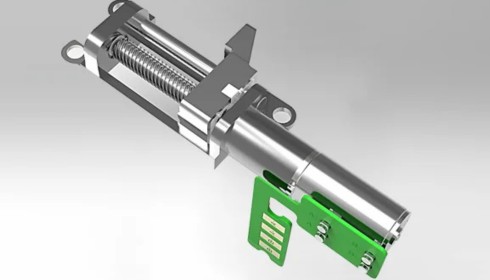1. What is edge computing?
Edge computing is a distributed computing paradigm that processes data close to where it is generated, at the “edge” of the network (e.g., IoT devices, sensors, and gateways), rather than relying on a centralized cloud server.
2. Why is edge computing important for IoT?
Edge computing enables IoT devices to process data locally, reducing latency, improving reliability, and decreasing the need for constant data transfers to the cloud.
3. How does edge computing improve latency?
By processing data closer to the source, edge computing significantly reduces the time it takes for data to travel between devices and centralized servers, minimizing delays.
4. What are some industries benefiting from edge computing?
Edge computing is widely used in healthcare, manufacturing, retail, automotive, smart cities, and telecommunications, where real-time data processing is a must.
5. How does edge computing ensure data privacy and security?
Edge computing minimizes data transfer to centralized servers, which helps reduce exposure to potential breaches and ensures sensitive data stays localized and more secure.
6. What is the difference between edge computing and cloud computing?
Cloud computing does its processing centrally in data centers, whereas edge computing does this closer to the source (at the edge of the network), making it faster in response and has lower latency.
7. Which devices are being used in the edge computing model?
IoT devices, sensors, gateways, autonomous vehicles, robotics, and edge servers can be seen quite often in an edge computing environment.
8. How does edge computing help with real-time analytics?
Edge computing enables real-time analytics by processing data on-site, reducing reliance on cloud infrastructure, and allowing for immediate decision-making.
9. What role does 5G play in edge computing?
5G provides high-speed, low-latency wireless communication, making it an ideal complement to edge computing, enabling faster, reliable data processing at the edge.
10. What are some use cases of edge computing in the healthcare industry?
In healthcare, edge computing processes real-time data from wearable devices, medical imaging, patient monitoring, and remote diagnostics to improve patient care.
11. Can edge computing enhance supply chain efficiency?
Yes, edge computing optimizes the supply chain through local processing, ensuring timely inventory management, predictive maintenance, and optimized logistics.
12. What are the challenges of edge computing?
Challenges include the management of a distributed network of devices, security, interoperability between devices, and power consumption.
13. How does edge computing enhance autonomous vehicles?
Edge computing helps process data from sensors and cameras in real-time in autonomous vehicles to make decisions immediately in safety-critical situations.
14. Is edge computing scalable?
While edge computing is localized in processing, it is designed to scale by adding more devices and increasing network coverage over time.
15. What are the differences between edge computing and fog computing?
Edge computing focuses on devices at the immediate edge of the network, whereas fog computing extends this concept by incorporating distributed nodes closer to user endpoints and less centralized than cloud computing.
16. How does edge computing help in smart cities?
Edge computing supports smart cities by processing real-time data from smart sensors in areas such as traffic management, environmental monitoring, and public safety.
17. What is the impact of edge computing on IoT security?
Edge computing improves IoT security by reducing the amount of sensitive data sent to centralized servers, thus minimizing risks of exposure and breaches during data transit.
18. How does edge computing manage energy efficiency?
Edge computing reduces the amount of data that needs to be transmitted thereby conserving bandwidth and minimizing energy consumption of the devices processing the data locally.
19. What are the expected future developments of edge computing?
Advancements of AI/ML at the edge, more robust IoT integrations, improved security protocols, and widespread deployment of 5G networks to support edge computing are expected in the future.
20. Can edge computing process big data?
Although edge computing is meant to process real-time, smaller-scale data processing, cloud infrastructure is there to complement the bigger, long-term data storage and processing.
21. What is the role of edge computing in AI and ML?
Edge computing allows for on-device AI and ML processing that enables real-time insights, predictive analytics, and decision-making without requiring constant cloud connectivity.
22. How does edge computing affect bandwidth usage?
Edge computing decreases the amount of data transferred to centralized servers, thus saving bandwidth and maximizing network efficiency.
23. Is edge computing cost-effective?
Edge computing can be cost-effective in terms of reduced transfer costs and avoidance of real-time high-bandwidth uploads to centralized servers.
24. What are edge gateways?
Edge gateways are the intermediate between edge devices and central servers, managing data flow, processing, and storage locally before sending data to the cloud if needed.
25. What is the role of edge computing in smart manufacturing?
Edge computing optimizes production in manufacturing by processing data from machines and sensors to enhance predictive maintenance, quality control, and supply chain efficiency.
26. How does edge computing relate to cloud computing?
Edge computing and cloud computing complement each other. Edge handles immediate processing, while cloud handles large-scale, long-term data storage and analysis.
27. What are the developments in edge device management?
The developments in edge device management include automated monitoring, remote updates, and unified management platforms to streamline the management of distributed devices.
28. What are edge AI models?
Edge AI models are artificial intelligence models processed locally on edge devices, enabling intelligent, autonomous decisions based on real-time data.
29. Can edge computing reduce latency in video streaming?
Yes, edge computing can significantly reduce latency in video streaming by processing and distributing data locally, ensuring smoother, faster delivery of content.
30. What is the future of edge computing in business operations?
The future of edge computing in business operations is going to be wide spread for real-time data processing, automation, and seamless integration with IoT and AI-driven solutions.
These FAQs explain the increasing trend of edge computing in the light of faster, more efficient, and secure data processing capabilities for industries.




